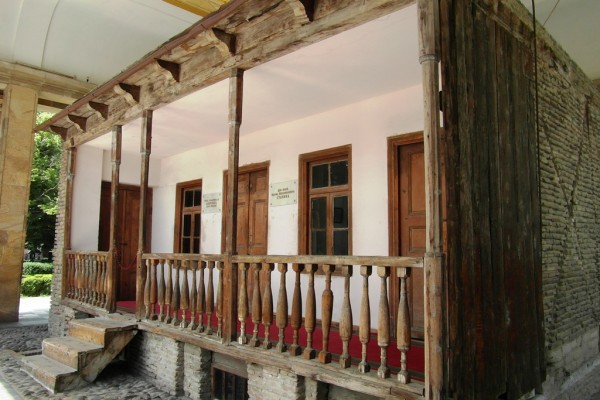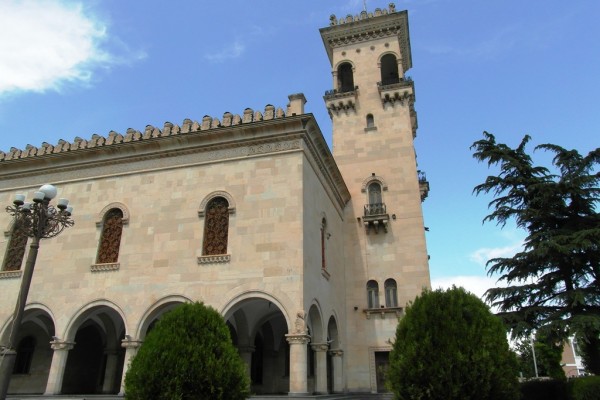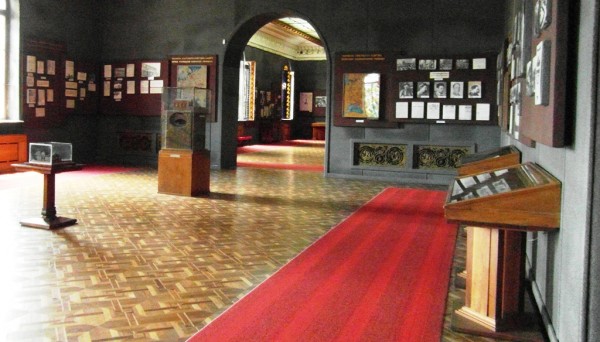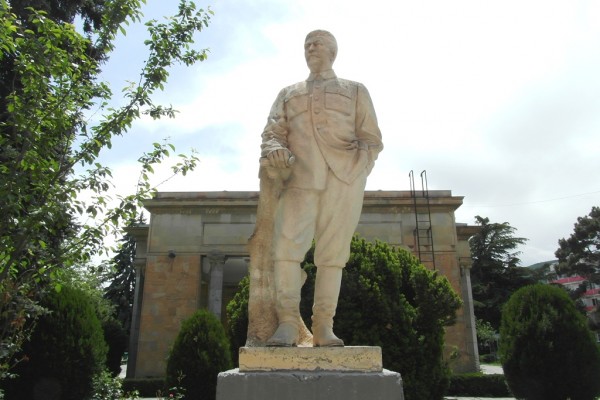
Joseph Vissarionovich Djugashvili was born in the town of Gori, Georgia in 1878.
Locals may still think of him fondly – after all, he is the local boy who made it big – really big.
Indeed, my taxi driver in Gori bragged to me that his grandfather and Djugashvili were schoolmates.
I arrived at the main town square in Gori (named in Djugashvili’s honor) to see a rectangular shrine type complex built around what appears to be an old cottage. A sign proudly announces that this cottage was his childhood home.

Behind this shrine is what may be the nicest, largest building in Gori, fittingly home to a museum dedicated to the hometown hero.

The museum details Djugashvili’s early success as a seminary student, followed by his ultimate expulsion. It lauds his growing role as a revolutionary in Georgia in the early 1900s and a large map shows the destinations of his many exiles to Siberia. Later, it proudly displays photographs of him with Lenin, Franklin D. Roosevelt and Winston Churchill. It celebrates the Soviet Union’s victory in the “Great Patriotic War” and highlights Djugashvili’s honors following the war. A large painting of Djugashvili and his wife could be that of any other loving couple (well, kind of).



But nothing mentions the thousands of military officers and political opponents he had killed.
Nothing mentions the 350,000 foreign ethnicities in the Soviet Union he executed.
Nothing mentions the hundreds of thousands of ordinary Soviet citizens – workers, peasants, teachers, priests, etc. – he murdered during his years of terror.
Nothing mentions the 7 million people he forcibly deported to Siberia or Central Asia.
Nothing mentions the 14 million people he sent to labor camps, many of whom died.
Nothing mentions that he was found guilty of genocide in 2010 for orchestrating a mass famine in Ukraine that killed up to 5 million people.
Nothing mentions that his economic policies likely led to famines that killed 10 million of the people he was supposed to lead.
No, nothing in this museum founded in 1937 in honor of Joseph Djugashvili mentions that he was responsible for the death of as many as 45 to 66 million people.
By comparison, Hitler is said to be responsible for “just” 25 million deaths.
You may be wondering why the name Joseph Djugashvili doesn’t ring a bell. Or perhaps you already figured out that most of the world knows him simply by one name:
Stalin.
Yes, I spent a few hours one afternoon in this town outside of Tbilisi gazing at exhibits in the Stalin Museum, puzzling over the enshrinement of Stalin’s childhood home and strolling through Stalin Park, which of course was located on Stalin Avenue.
It just felt bizarre to see so much honor given to someone who was so evil.

I should note that a sign at the entrance to the Stalin Museum now informs visitors that
“[T]he museum is a typical example of soviet propaganda and falsification of history. Throughout various stages of soviet history, the expositions were modified or refocused, but the objective of the museum stayed unchanged – to legitimize the bloodiest regime in history.”
It goes on to say that with the support of the Ministry of Culture and Monument Protection of Georgia, the museum will be transformed into the Museum of Stalinism, “which will tell the story of the most important milestones in Stalinism thoroughly and impartially.”
Have you ever visited a place honoring someone who most people consider to be evil?
